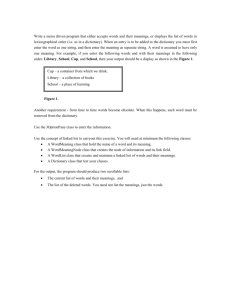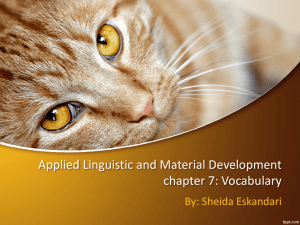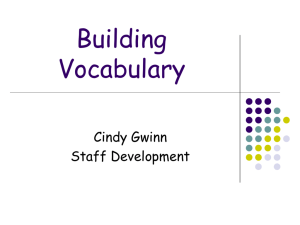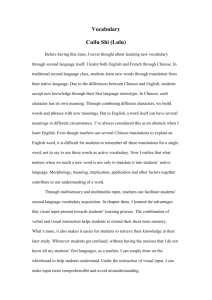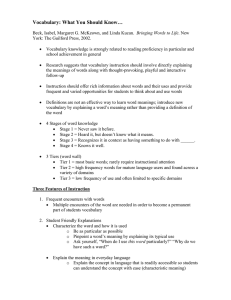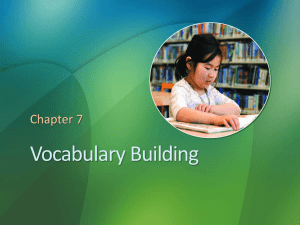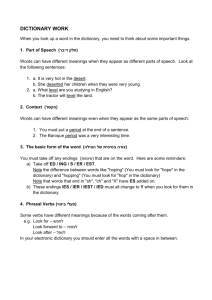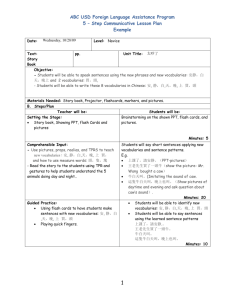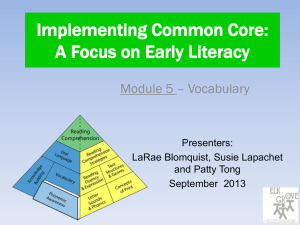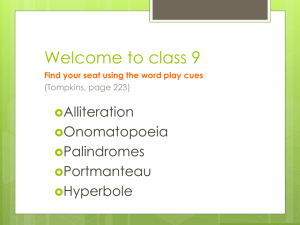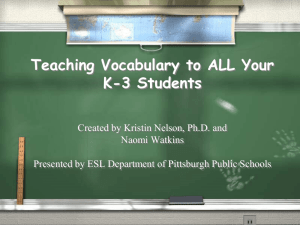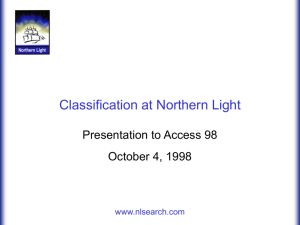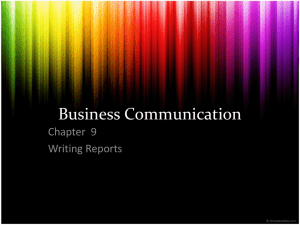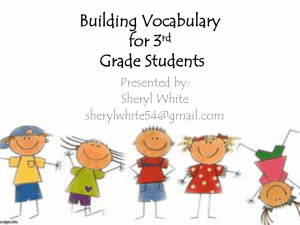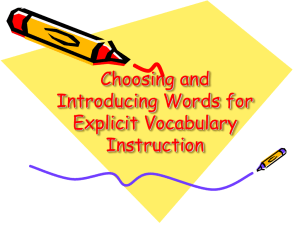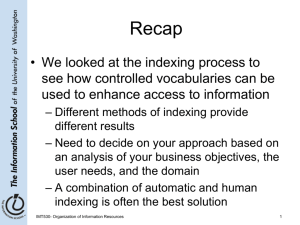C11_Assessment - Sourcebook Companion Website
advertisement
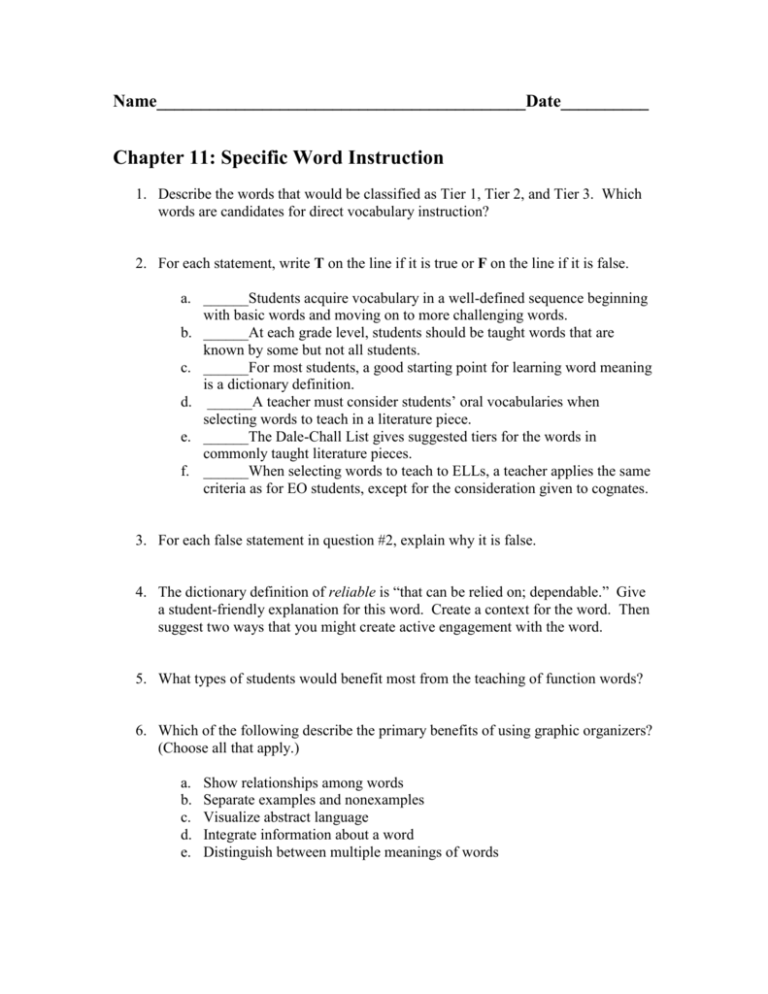
Name__________________________________________Date__________ Chapter 11: Specific Word Instruction 1. Describe the words that would be classified as Tier 1, Tier 2, and Tier 3. Which words are candidates for direct vocabulary instruction? 2. For each statement, write T on the line if it is true or F on the line if it is false. a. ______Students acquire vocabulary in a well-defined sequence beginning with basic words and moving on to more challenging words. b. ______At each grade level, students should be taught words that are known by some but not all students. c. ______For most students, a good starting point for learning word meaning is a dictionary definition. d. ______A teacher must consider students’ oral vocabularies when selecting words to teach in a literature piece. e. ______The Dale-Chall List gives suggested tiers for the words in commonly taught literature pieces. f. ______When selecting words to teach to ELLs, a teacher applies the same criteria as for EO students, except for the consideration given to cognates. 3. For each false statement in question #2, explain why it is false. 4. The dictionary definition of reliable is “that can be relied on; dependable.” Give a student-friendly explanation for this word. Create a context for the word. Then suggest two ways that you might create active engagement with the word. 5. What types of students would benefit most from the teaching of function words? 6. Which of the following describe the primary benefits of using graphic organizers? (Choose all that apply.) a. b. c. d. e. Show relationships among words Separate examples and nonexamples Visualize abstract language Integrate information about a word Distinguish between multiple meanings of words 7. The following activities are all part of the Text Talk method for teaching vocabulary. Identify the order in which these activities should happen when introducing a target word. Write 1 in front of the first activity, 2 in front of the second, and so forth. a. b. c. d. e. f. g. h. i. ______Provide a new context for the word ______Give a student-friendly explanation of the word ______Work with all target words from the lesson ______Define the word briefly at first encounter ______Have students say the word again ______Begin reading the story aloud ______Have students engage with the word ______Have students say the word aloud ______Contextualize the word 8. Answer the following questions about the number of new words that should be introduced directly through teacher read-alouds. The answers should be yes or no. a. For grade 2, would 5 or 6 words per book per week be appropriate when using two books? b. If a grade 1 teacher is using two books in one week, should he or she probably be introducing 8 – 10 new words? c. Should a teacher who has students with well-developed vocabularies introduce more words per book than a teacher who has students with average or below average vocabularies? 9. In your own words, describe the factors you would need to consider when planning a month’s worth of vocabulary instruction for a class of second graders. Your answer should address factors related to students, instructional approaches, and research-based recommendations. 10. For each benchmark, suggest a TYPE of activity that would be appropriate to develop skill in that area. a. The ability to develop in-depth knowledge of word meanings.____________________ b. The ability to improve story comprehension._____________________ c. The ability to distinguish between function words.____________________ d. The ability to classify words into categories.____________________ e. The ability to classify words related to a specific concept.___________________ f. Ability to remember word meanings____________________


